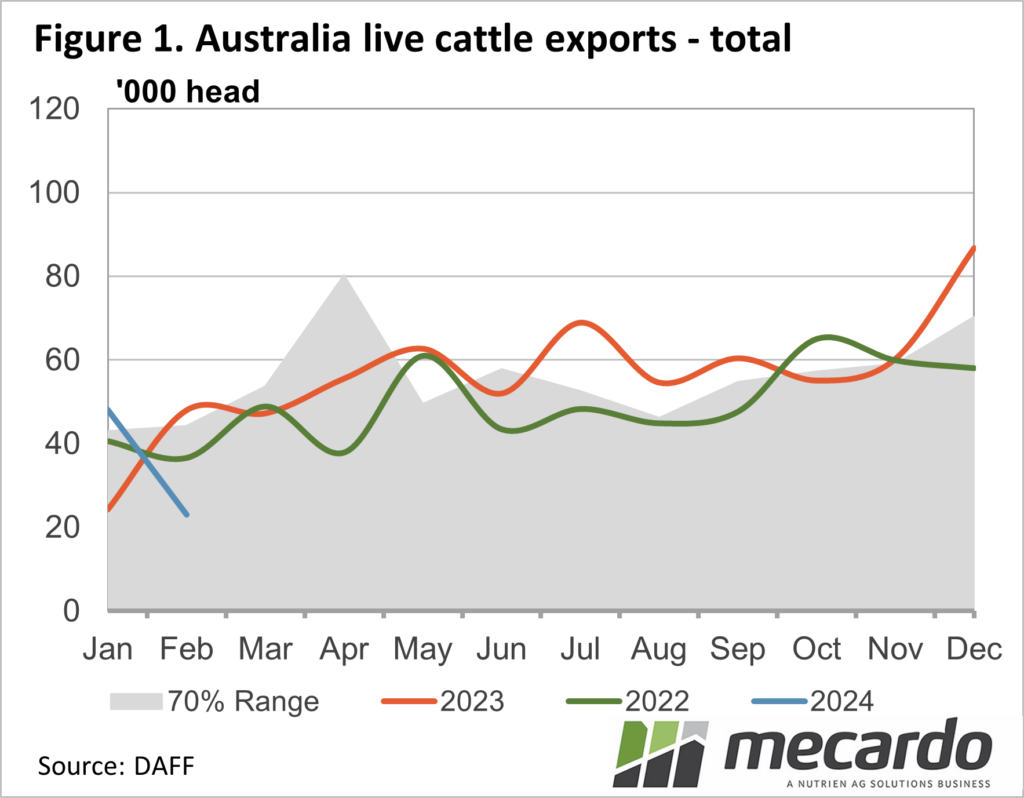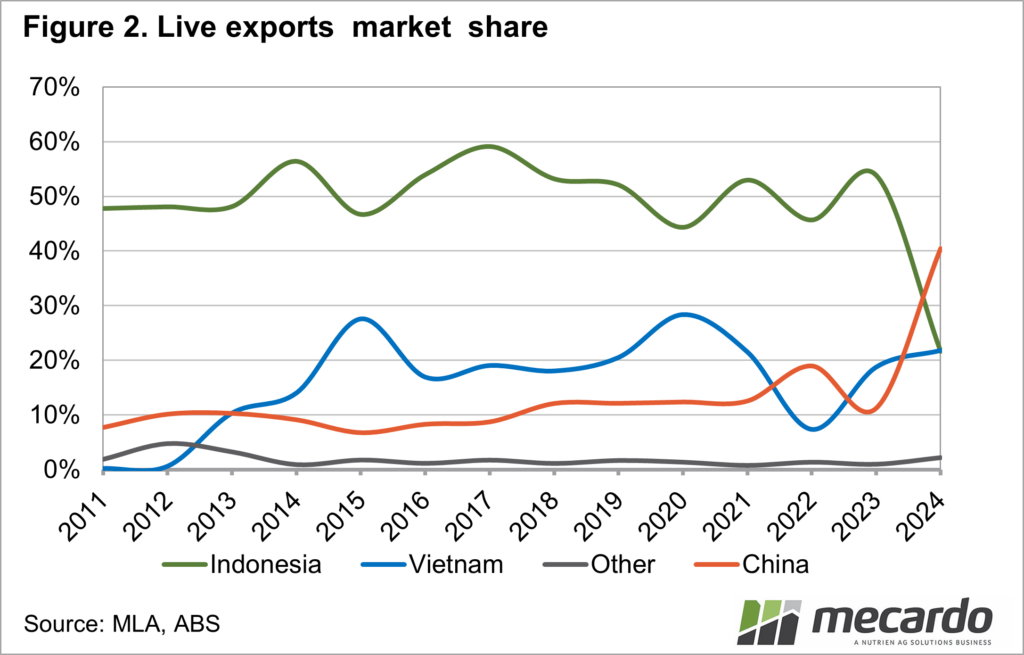Australian live cattle exports got off to a cracking start, surging well above year-ago levels in January, however, February saw less than half the cattle leave our shores than did in the same month of 2023.
This is being put down
to the major market, being Indonesia, only signing on the dotted line when it
came to import permits in mid-February (article here). However, with the Ramadan
feasting celebrations right around the corner, all indicators point to March
having been a bumper month.
Live exports of cattle
from Australia increased in 2023 for the first time in four years, with an
extra 12% headed offshore. The decrease in Australia’s domestic cattle prices
and the availability of cattle as the herd built up its numbers were positive
for live exports, and according to Meat and Livestock Australia consistent
supply and high quality kept importers looking to us for their cattle. However,
their latest outlook said the sector now faces “subdued consumer purchasing
power” due to economic factors such as inflation.
In February just 23,021
head were exported, which was less than half of both the previous month and the
same month last year. It was also nearly 65% less than the five-year average.
In fact, it was the lowest monthly total of any month since 2000 (as far back
as our records go). And while a decent number in January means the year-to-date
(with February being the latest data available) figures are now only 2% lower
than the same period last year, at 71,197 head it is still also the lowest for
January-February in our records too.
Looking at specific
markets, Indonesia took just shy of 15,000 head in February as the major
market, but that was still 58% less than they imported from Australia in the
same month last year. With barely any cattle going there in January, their
year-on-year numbers for January-February are 56% lower.
Vietnam was the next
largest market in February, taking about 4200 head of slaughter cattle, with
their year-to-date numbers up 105% – despite importing 35% less breeder cattle
in 2024 so far. China didn’t import any live cattle from Australia in February,
but its intake of more than 28,000 head of breeder stock in January puts it at
104% higher year-on-year. The Philippines, while taking smaller numbers than
the other large markets, is up 36% for the year.
What does it mean?
Live exports are off to a slow start, and despite reports of very strong figures to come out of March, the barriers for increased trade that have been facing the sector for the past few years are still there – the likes of cheaper protein availability from Indian buffalo meat and slowing economies in key markets. This will be countered by strong cattle numbers, which should be further supported by the good wet season in much of the north, and lower domestic prices. It is early days; however it currently points to a status quo for live exports.
Have any questions or comments?
Key Points
- Live exports fell to more than 50% below the five-year average for the month of February.
- Indonesia took a majority of the February exports and was the reason overall volumes dipped so substantially.
- Year-to-date figures are close to the past two years, but the outlook for 2024 remains uncertain.
Click on figure to expand
Click on figure to expand
Data sources: DAFF, LiveCorp, MLA, Mecardo














